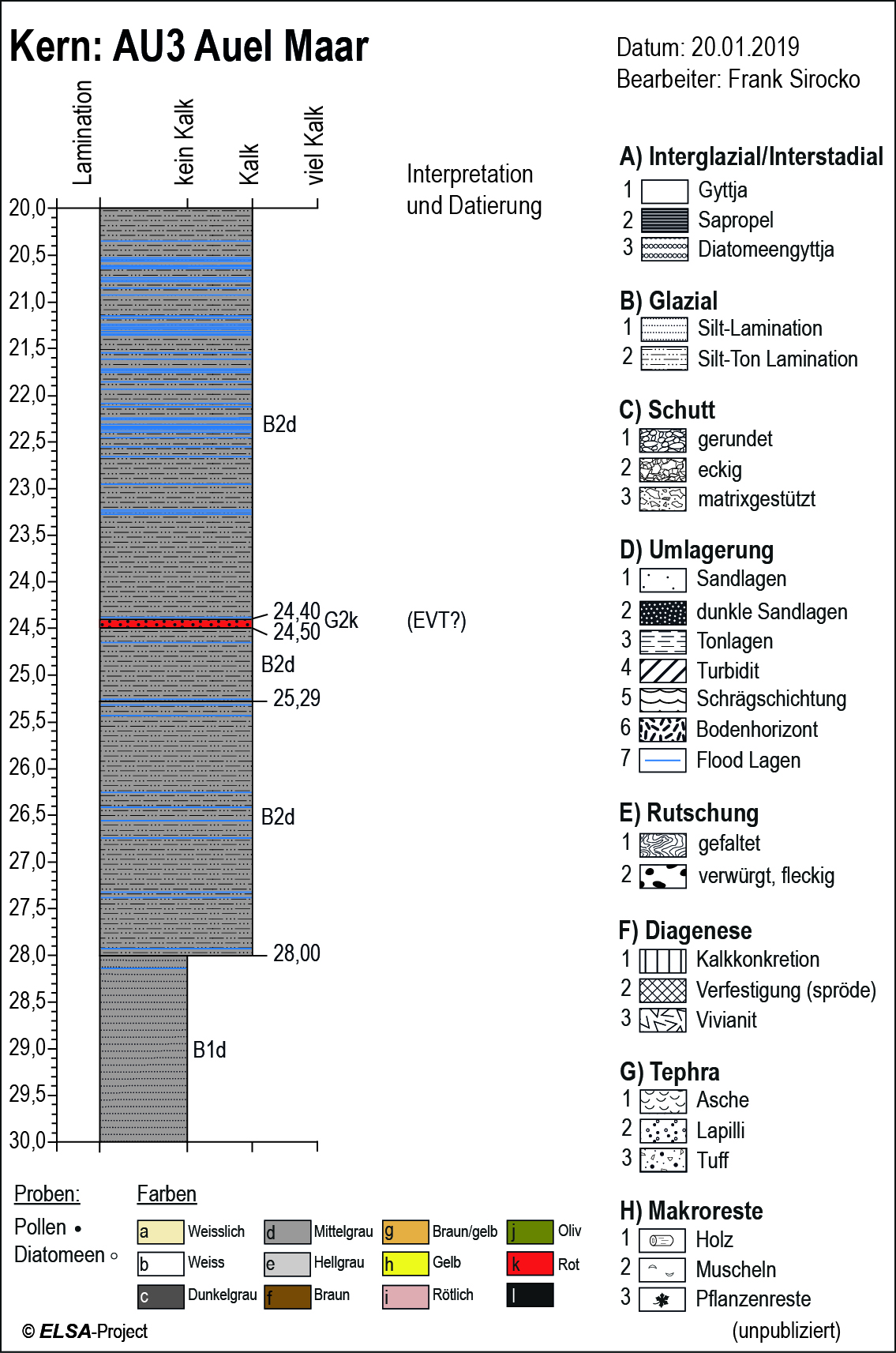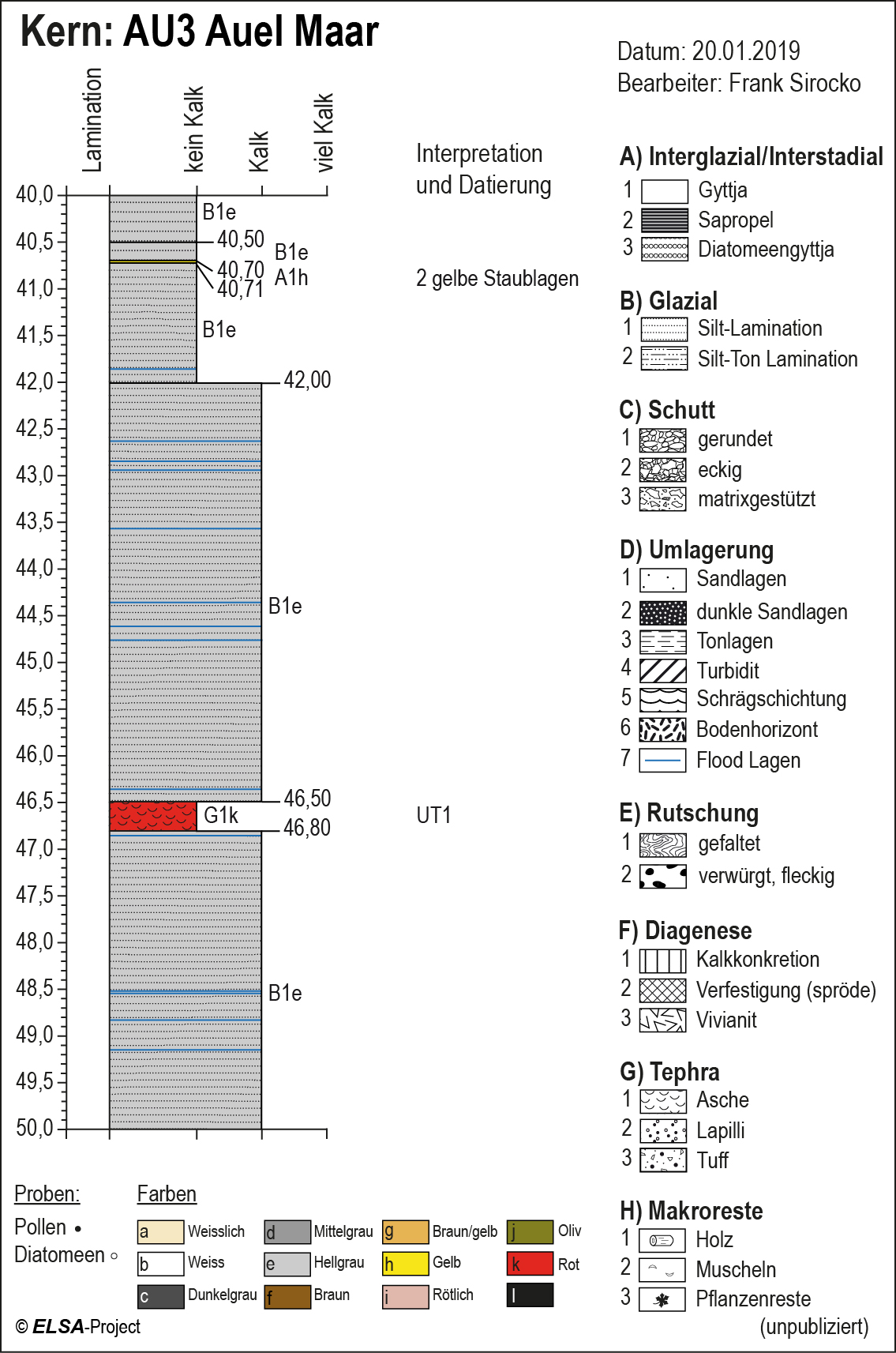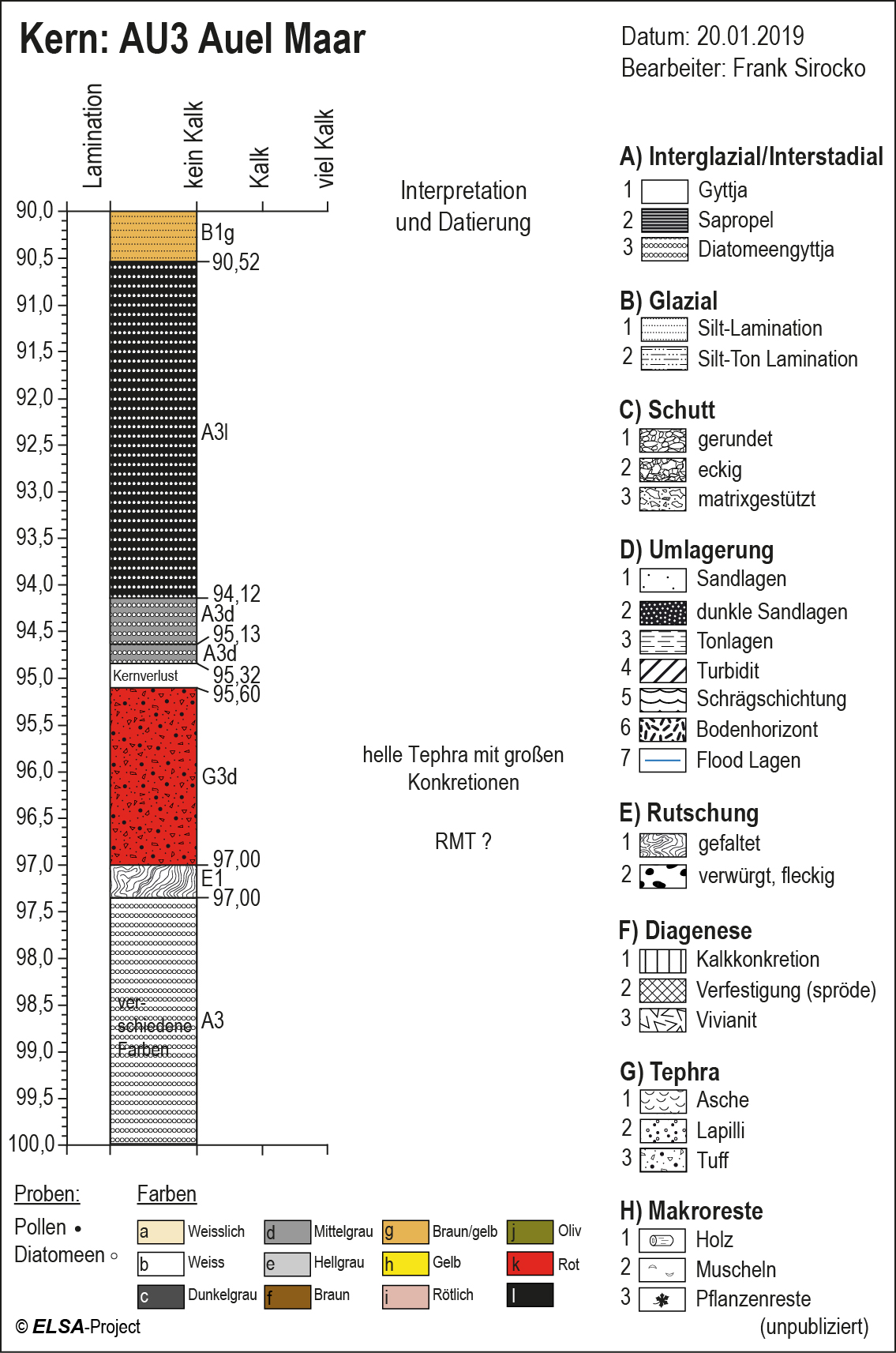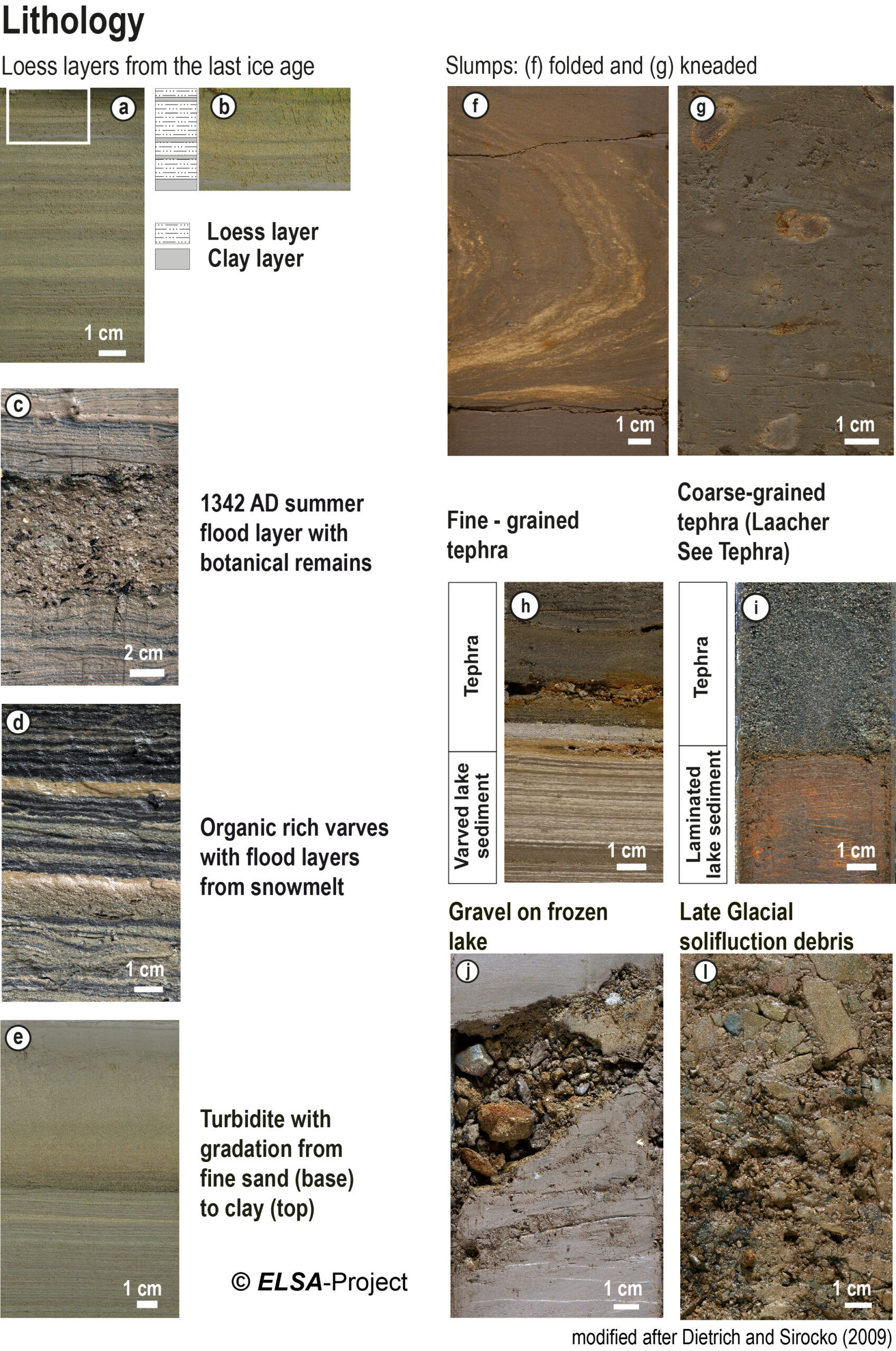Lithology
- Figure Lithology
Timetravel through last Glacials
(Audio comments will be added shortly)
Timetravel through last Glacials
(Audio comments will be added shortly)
The principle changes in lithology are visible already from the core photos above. Holocene and GI14-17 sediments present diatom rich gyttja, either as varves or laminations. Varves are visibly detectable and countable if they contain abundant diatoms, which show up as fine white layers. However, Holocene sediments can be alternatively devoid of diatoms and present only organic matter of brownish or greenish color, with some clastic proportions, which are often a function of agricultural activity in the catchment of the maar lake. Glacial sediments are always yellowish silt laminations, with varying proportions of sand and clay.
About 95% of all sediment are deposited in a deep basin without any sedimentary disturbances. Reworking of sediment by currents and gravity result in coarse grained clastic layers, which are from slumps, turbidites, tephra, intercalated with the lake sediments. Gravel layers however characterize the uppermost meters of every maar; these can be fluvial gravel layers or late glacial solifluction debris.
The sediments on the base of every core are also coarse grained, but these gravel layers present debris, washed into the initial basin after eruption when the lake was filled with ground water. A fine grained grey ash often presents the uppermost lithological unit from the initial, maar forming eruption phase.











